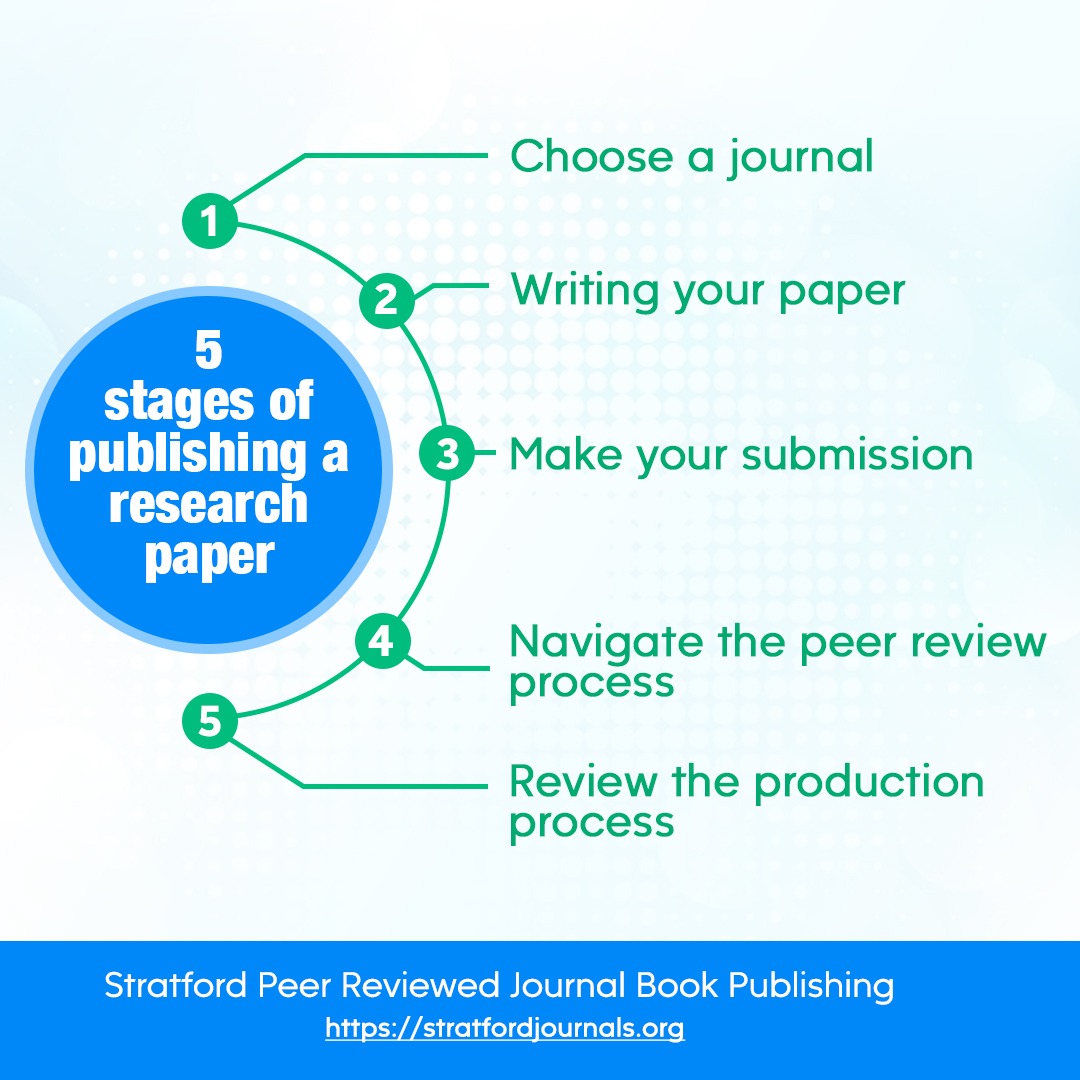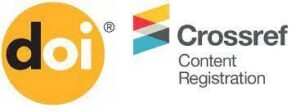
Publishing a Research Paper
Publishing a research paper is a vital milestone in any academic career because it enables scholars to reach a wider audience. Further, it plays a crucial role in career advancement, allowing you to gain reputable recognition for your expertise. Also, publishing your research in reputed journals can gain you credibility and trust as it will attract public trust in your research, which will result in more collaborations. Moreover, it triggers professional development as research requires deep digging into a particular subject.
Trying to understand a specific topic enables you to gain more skills in your field of practice. Research publishing entails five stages. In this blog, I will explain the five stages of publishing a research paper that anyone can follow to achieve the milestone. The five stages are: choosing a journal, writing your paper, making your submission, navigating the peer review process and the production process.
Choosing a journal
Choosing a journal where you intend to publish your work is the first step. Look for a journal that rhymes with your area of expertise. It is very crucial as the journal you determines the type of audience reached. You can visit some sites like google scholar to see journals published in your field. We have also discussed crucial aspects that you need to consider to achieve the best in your journey to publishing a research paper. Also, you use some of the journals you used when you were doing your research. Further, you seek help from your friends or professionals from your field of study to help you choose a better journal.
Also, international organizations like the World Association of Medical Editors (WAME) have created a platform to help editors like you differentiate pseudo journals from legit ones. This platform of identifying pseudo journals is a plus to upcoming editors like you to avoid falling prey to these pseudo-publishers.
Further, it would be best if you looked at how to choose a journal so that you can be able to learn some basic guidelines in journal publishing. For instance, submitting your writing to multiple journals is a breach of conduct. If your paper gets rejected by one journal, then you can submit it to another or transfer it to the same journal. Therefore, how to choose a journal will equip you with the basic knowledge for journal publishing.
It is advisable to choose a journal before starting writing because it will enable you to tailor your work to the requirements of the selected journal. Therefore, you can reduce the chances of your article being rejected by some journal publishers.
Writing your Paper
After selecting your journal, then you embark on writing your paper. You must be careful when registering to avoid your paper being rejected. It is suitable for you to seek help from some sites and professionals in your field to improve the quality of your writing. Preparing and writing a compelling paper will make your article accepted and appealing to your target audience and journal publishers.
In writing your paper, consider the interests and rights of your target audience. If the audience feels the article infringes on their rights, they will reject your script. It would be best if you kept in mind that your instructor in writing is your target audience. The audience shapes how your paper should like. Before writing for your audience, ensure that you understand them very well. For instance, you should know your audience type: general or professional. The audience generally requires informative language since they need to learn more about the study area. In the case of a Professional audience, you are sure they can understand jargon and terminologies used in your field. Further, they will expect your writing style and vocabulary to align with the field of study.
Also, assuming that t audience knows much about the study area, you do not detail your work. Therefore your paper will need to be stronger. But thinking that the audience is less knowledgeable about the study will make you explain in detail, thus making your writing more assertive and more appealing as you will try to make the audience understand your topic.
Further, it would help if you predicted your audience’s reaction to your paper. For instance, you may be writing to an audience likely to disagree with your findings; thus, your language must be more appealing. If your audience is expected to agree with your conclusions, then your language should be more emphasized. If you are writing to an audience with a different opinion, explain why it is good to accept your ideas. Also, if your writing requires the audience to act in a particular manner, ensure you provide the information needed to facilitate the move.
Making your Submission
After writing your paper then, you switch to submitting your article. Ensure that you have followed the correct procedure for manuscript submission. To avoid making some simple mistakes that lead to your writing getting rejected, visit the instruction for authors for guidelines on making your request successful. Also, Taylor & Francis helps editors in manuscript submission minus any formatting specifics, thus saving your time in the offer.
Before submitting your manuscript, ensure you write an appealing cover letter. In your cover letter, explain why your writing is more important. The cover letter is the first impression of your paper; therefore, you should highlight why your manuscript is suitable for the selected journal. In your cover letter, ensure you confirm that your writing has never get published in any formal, why you think that your readers will be interested in your writing, have the title of your writing name of the journal you are submitting to disclose that you have no competing interests and also the contact information for you and your co-authors.
Further, go through the Taylor and Francis editorial policies as they apply to almost all journals. For instance, you should state where your research was approved, conducted or supported. It may be an institution affiliation or an independent status. Further, listing the authors who have contributed to your work is highly recommendable to give them credit for their work. Also, Taylor and Francis’s editorial policies emphasize timely and verified literature, as this will promote the integrity of your work. Further, you should declare comparing interests related or perceived to your article and avoid using pictures or illustrations not associated with your writing.
A good title will make your article discoverable. Therefore it is good to be careful when selecting a title for your paper, but it must be related to your writing. It would be best if you thought of the one looking for that information online to develop a suitable title. Then come up with keywords you think the researcher may type online while looking for information. Use the keywords which best explain or summarize your work. Also, your title should be accompanied by a well-written abstract. Further, for your work to be more discoverable, you should register with ORCID, a non-governmental organization which helps you to be identifiable to researchers.
Navigating the Peer Review Process
After submitting your manuscript, your work is subjected to an independent assessment before publication. This stage is crucial to you as it acts as a tool for immediate feedback which you can use to improve your writing before being published. The reviewers of your work determine whether your writing is original or related to your field of study. The process is rigorously done to ensure that your work meets all the requirements for qualification. Although almost all journals undergo this process, some are reviewed after publication. This review is done by reading the comments left by readers, thus judging your work through your readers’ reactions. But you can check your manuscript in in-depth technical reviews from experts to be more confident with your work in the peer review process.
The peer review process comprises four steps; editor assessment, the first round of peer review, revision and resubmitting, and acceptance. In the editor assessment stage, your manuscript gets checked to determine whether it is suitable for publication in the selected journal, whether your cover letter explains everything needed, and whether your abstract is good. If your manuscript does not pass all the requirements, it gets rejected quickly, and you can submit it to another journal. If it passes all the qualifications, your manuscript gets subjected to the first round of peer assessment. In this stage, the editor asks a minimum of professionals in the field of study to review your work. They will check whether your writing is new, whether you have used the correct methodology, whether somebody can replicate your work, and whether the results are reliable. Once the editor receives the considered reviews from the selected professionals, the editor will make a judgement, and they will let you know about their decision. You may get a straight acceptance or get advised to make corrections and resubmit your work.
In the revise and resubmit stage, you must make corrections based on reviewers’ suggestions. After correcting and resubmitting your manuscript, your work is subjected to another review to see whether you made the correct corrections. If they are unsatisfied, they will resend it to you for further modification. You can redo your correction or submit it to another journal. If you intend to submit it to another journal, completely withdraw your manuscript before submitting it to another.
The Production Process
Once your manuscript is accepted, the process of publishing begins. Your manuscript enters the Central Article Tracking System (CATS), where they create your proofs and send them to your email. You can start preparing a video abstract for the manuscript during this production process. Once you receive the email, you must read the instructions carefully, as not all journals use CATS for proofing, as others use the Online Correction Tool (OCT). In checking proofs, make sure to check the article sent with the original one and whether the figures and tables are correct, as the publisher will not be held responsible for any error in your work. Remember to check the spelling of your name and that of your co-authors for accuracy. Therefore, correct your work carefully to make sure your readers are satisfied. Also note that if you use OCT for proofing, the placement of tables and figures varies from the PDF.
You will be required to give the publishing rights to the publisher. The publishing rights are in the form of copyrights. The copyrights usually last for more than 70 years. You then sign the author contract before the publisher publishes your article. You have two options in publishing your article in a subscription journal: copyright assignment and exclusive license. In copyright assignment, you allow the publisher to act as the owner of the article. This transfer of ownership allows the publisher to act upon when your article has gotten plagiarized or infringed, to make it visible to third parties and manage, publish and make your work visible in the scholarly world. However, as the author, you retain some rights, such as being recognized as the writer of that article, making copies for your use, teaching and sharing the article with your colleagues and other people you want to read your work. Also, you can use the article as part of your thesis.
In the case of the exclusive license to publish, you don’t surrender your copyrights to the publisher but only allow them to publish your work. The publisher has only publishing and disseminating rights. The publisher can enable others to publish the work in another territory if they adhere to the covenant.
After publishing, if you published your article with Stratford Journals publishing and Books, you can log in using your username and password, select settings, and then Authored Works to access your article. After logging then, you can be able to track your writing.
In conclusion, this process may be tedious your first time, but after publishing your first article, it becomes easier. Always avoid any mistake which will result in the article getting rejected. Also, ensure that you thoroughly research before starting to write your paper.

